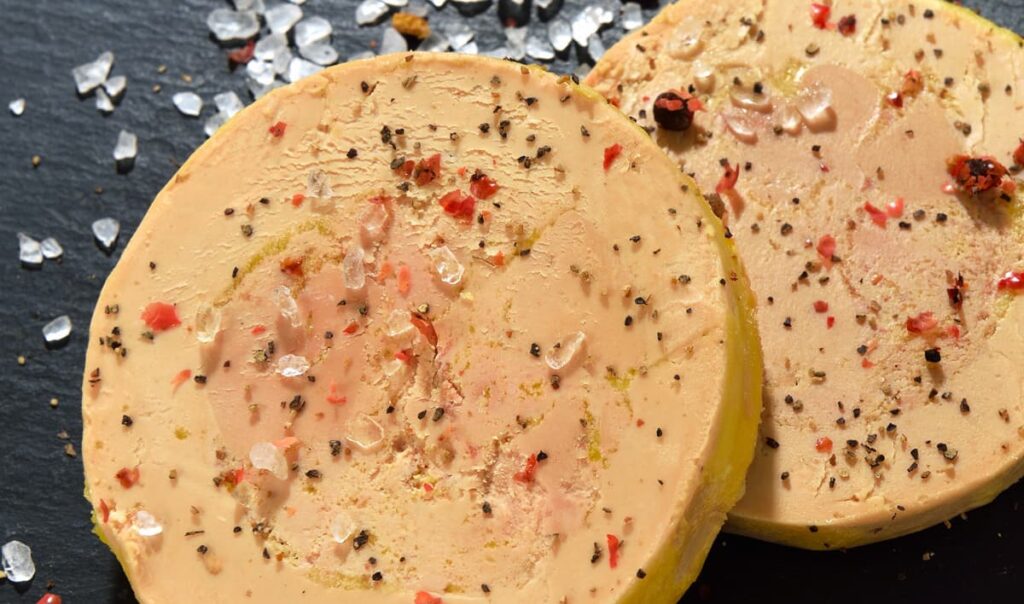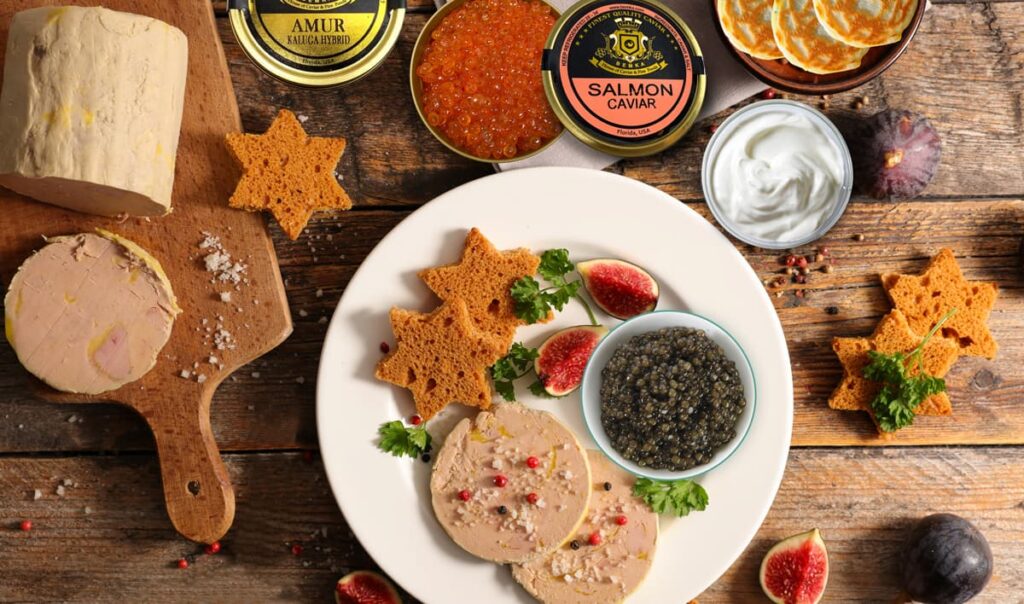You may have heard about it at least once in your life. Foie Gras (pronounced “fwah-grah”) french for “fat liver”, is considered a delicacy around the world and how could it not with such a fancy name! Foie Gras is the liver of a duck or goose that has been enlarged through a special feeding technique. Although it was popularized in France. Although the technique is controversial, Foie Gras remains one of the world’s great luxury foods.

Foie Gras is sold either whole, as pâté, or as a mousse. It is then served in terrines or as a hot entreé or main ingredient. A terrine of Foie Gras is one of the purest forms of preparations: The pieces of liver are layered in a loaf pan along with a bit of Sauternes or Armagnac and then the mold is weighted down, baked, chilled, and then sliced. If you’re wondering about how it tastes, you should know it is extremely fatty, with a very rich, buttery flavor and a smooth texture. However, when looking for Foie gras you may find both types: the ones made from duck and others made from goose. While both duck and goose Foie gras are rich and buttery in flavor, goose Foie gras is considered the more refined, with a milder taste. Duck Foie gras can have a somewhat more gamy flavor, though it is slightly less fatty and thus better suited for high-heat cooking.
Now, the question is: how to serve Foie gras? There are a few traditional methods for cooking Foie gras. You can do it simply by searing the whole product in a hot pan to puree and making it into a mousse. It melts easily, so while it is often prepared with high heat cooking it this way can be tricky.

Foie gras is also often made into a mousse, where cooked Foie gras is pureed in a food processor along with brandy and butter to make a smooth, silky paste to spread on fresh bread.
Some information you should take notes of is the fact that all Foie gras is made up of two lobes (one smaller than the other) that together create an oval shape. The liver weighs between 1 1/2 and two pounds. And there are three grades of Foie gras: Grade A, Grade B, and Grade C.Grade A is the best quality, designating a liver that is the largest in size with a firm body, shiny exterior, and smooth texture. The color is consistent and there are no blood spots or blemishes. A Grade A Foie gras should have a sweet smell and is used in the simplest of preparations, such as searing and sauteeing. Grade B Foie gras has the same rich taste as Grade A but is smaller with visible veining and defects and has a softer texture than Grade A, making it ideal for pates and terrines. Grade C, the lowest quality Foie gras, is not as prevalent as the other two and is used mostly to flavor and thicken sauces.
So far you’ve already learned more than the basics of Foie gras. Remember whether you purchase goose or duck whole Foie gras, you have the option to prepare it in a few different ways: searing it whole, processing into a pate, layering in a terrine or pureeing into a mousse. And you can also pair its rich, buttery flavor with fruit like apples, grapes, and figs, as well as balsamic vinegar.

Where to buy Foie gras? Fresh Foie gras can be hard to find in grocery stores, so you will want to check gourmet shops as well as online. Prices vary but you can find it available fresh, whole, raw lobe, or fully cooked medallions or terrines that you can slice and serve. No matter which type you’re buying, Caviar Lover is your place!
Visit our online store and find all of these products always available for you and just a click away from your home:

When looking for high quality products and a reputable store, visit Caviar Lover. We make sure to offer you the greatests variety of Foie gras and of course, Caviar, meats, seafood and much more specialities. Come and pick your favorites, we’ll be glad to have you!
